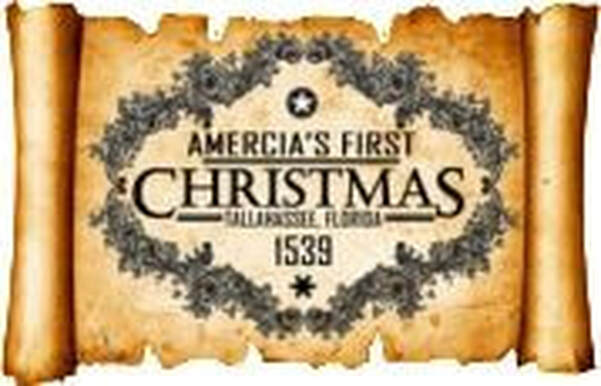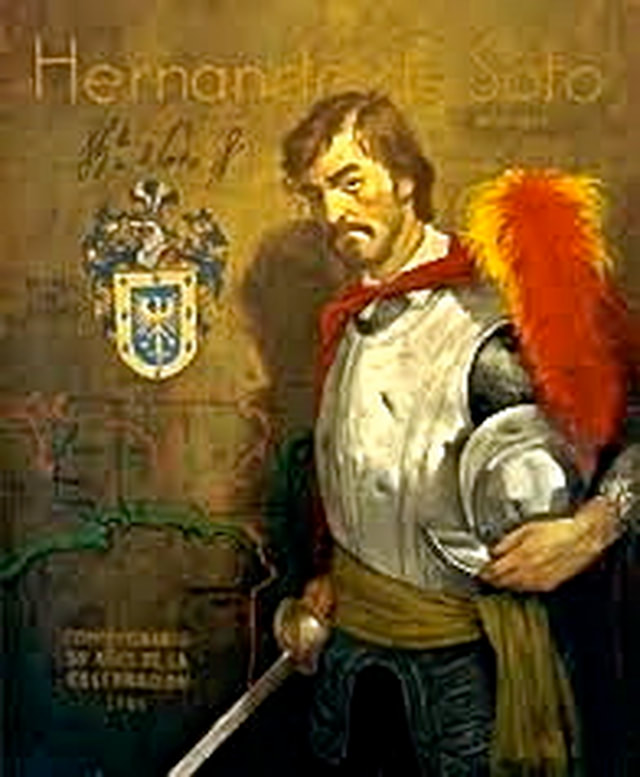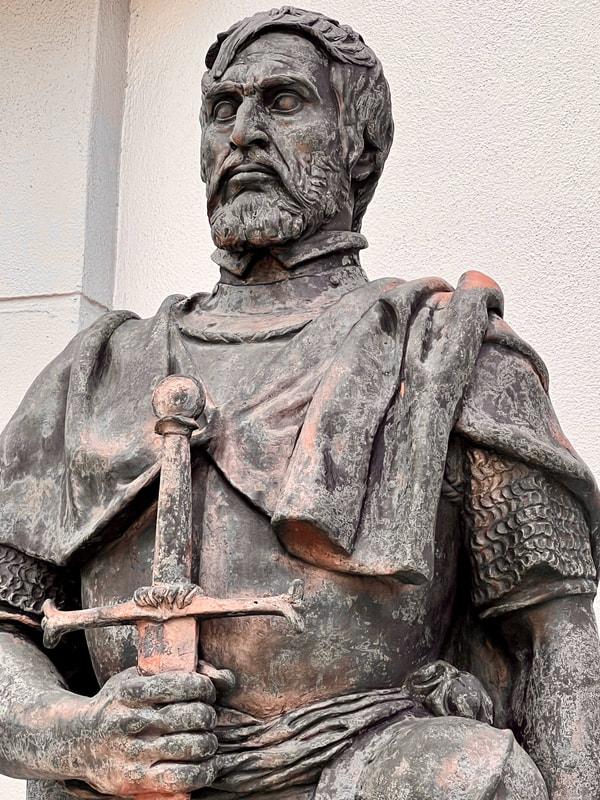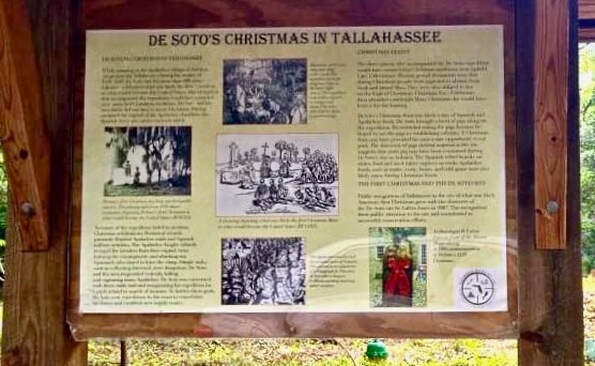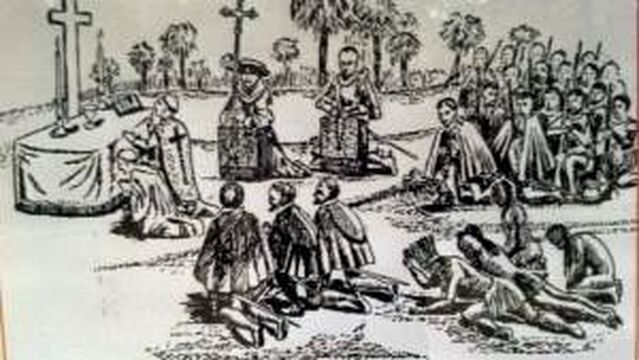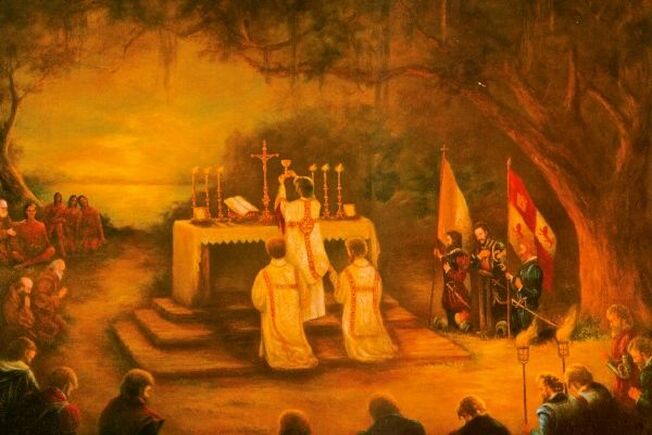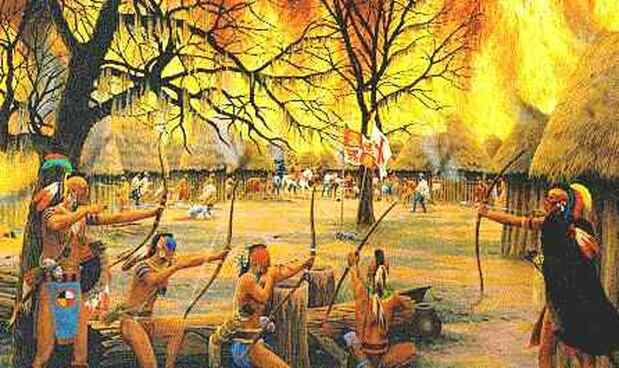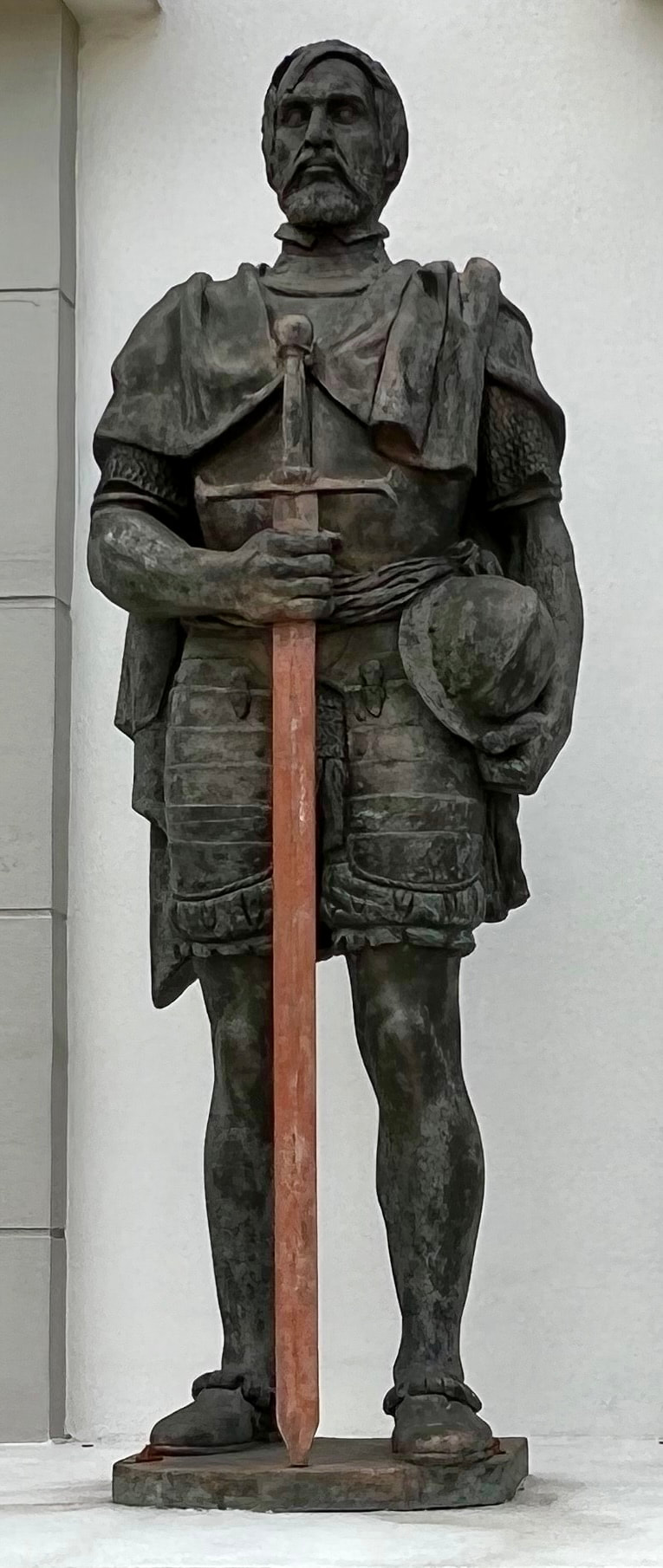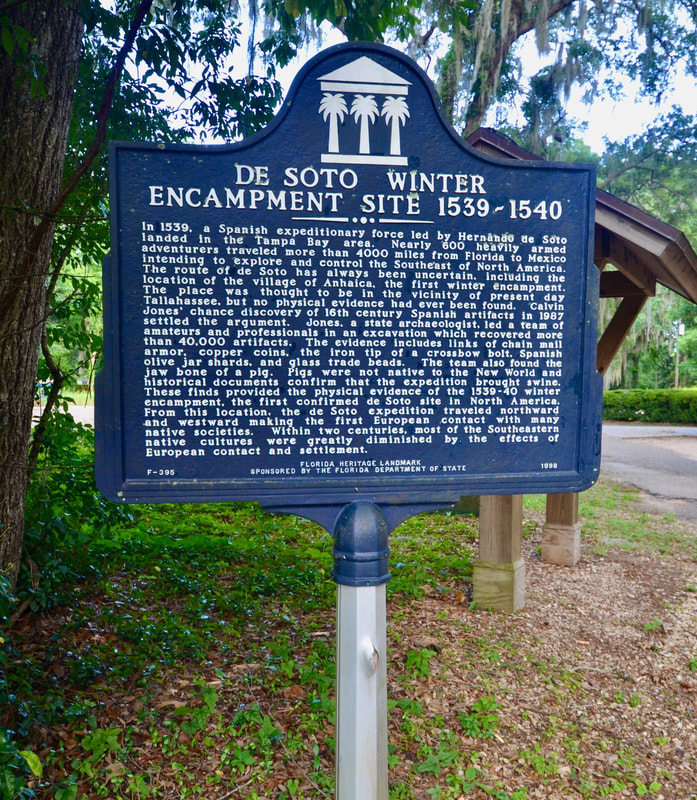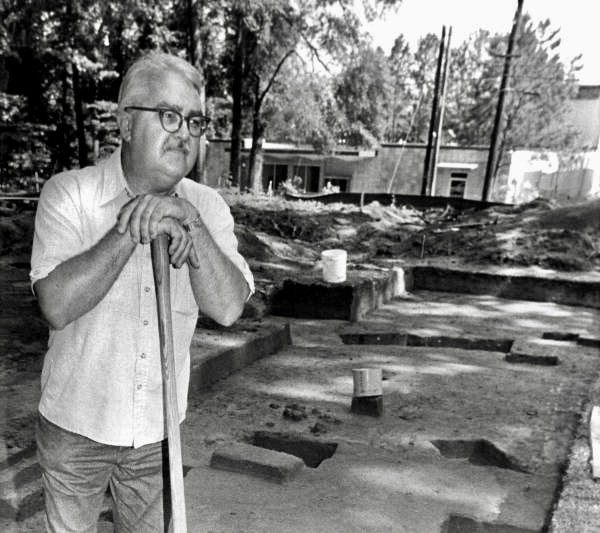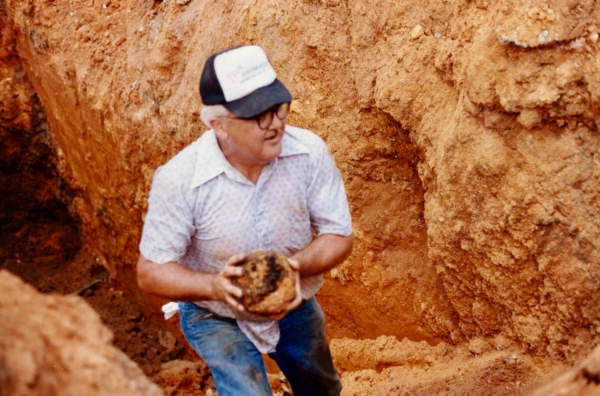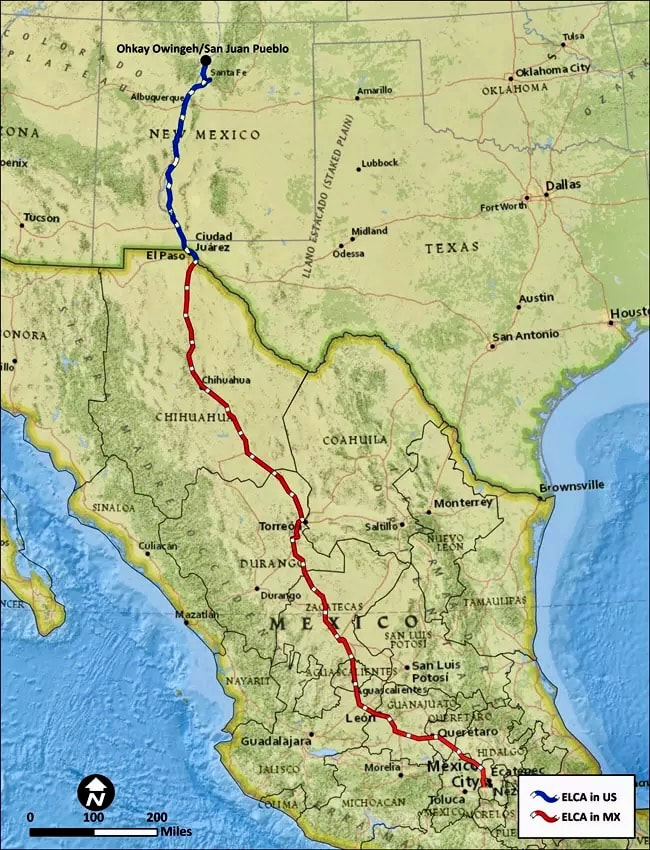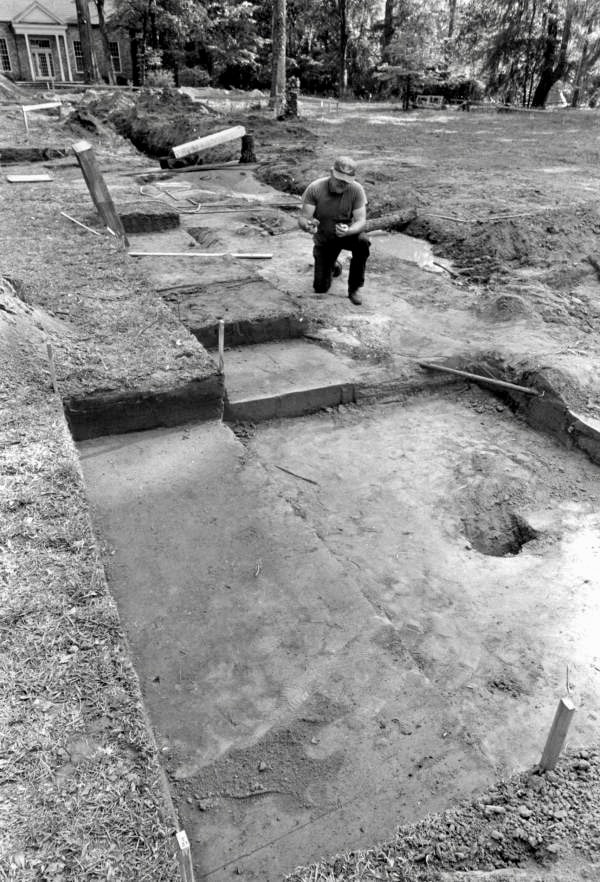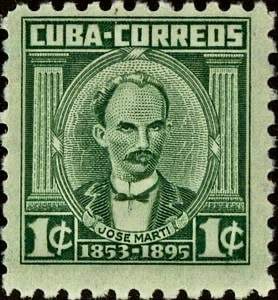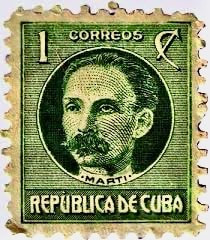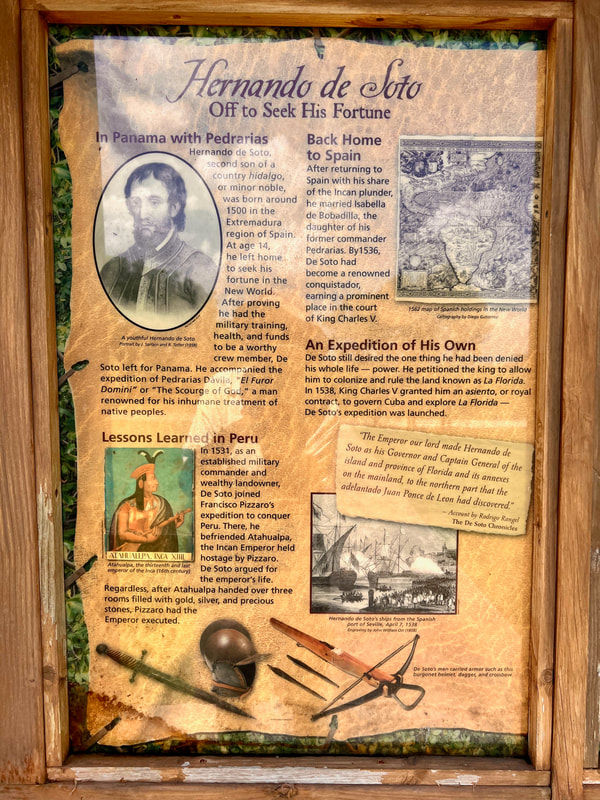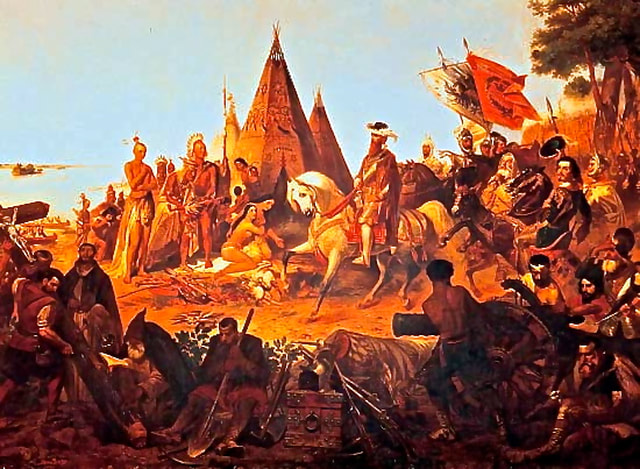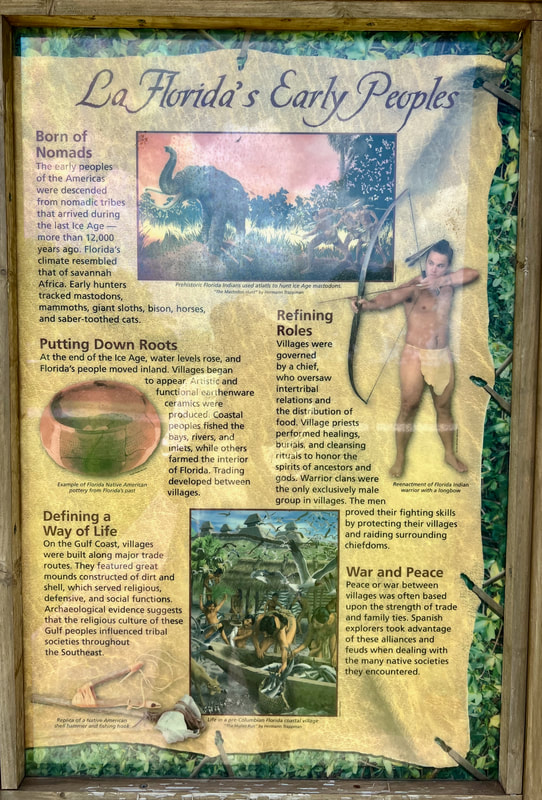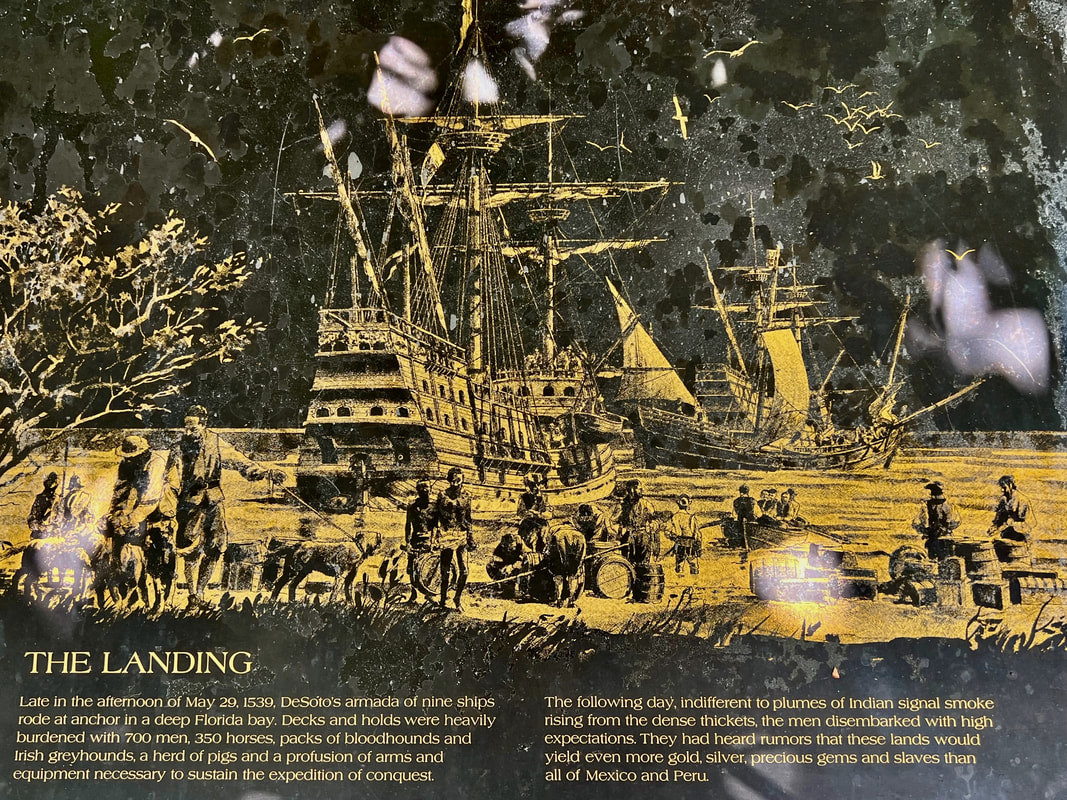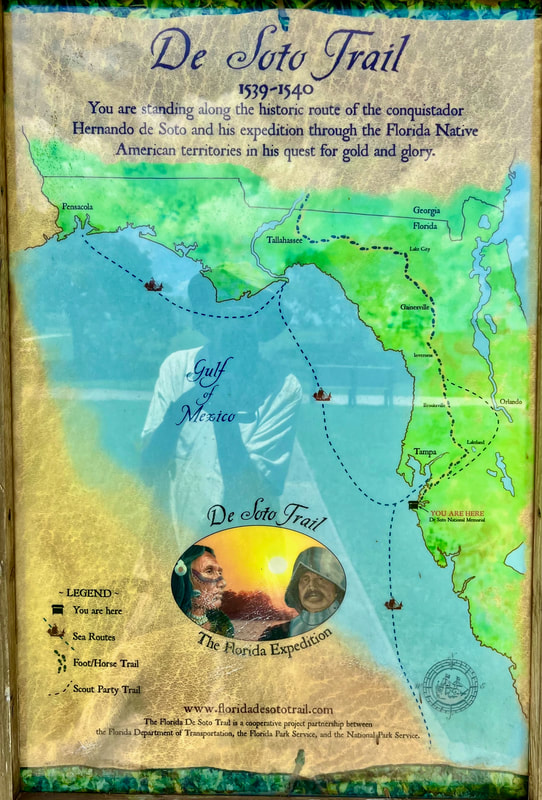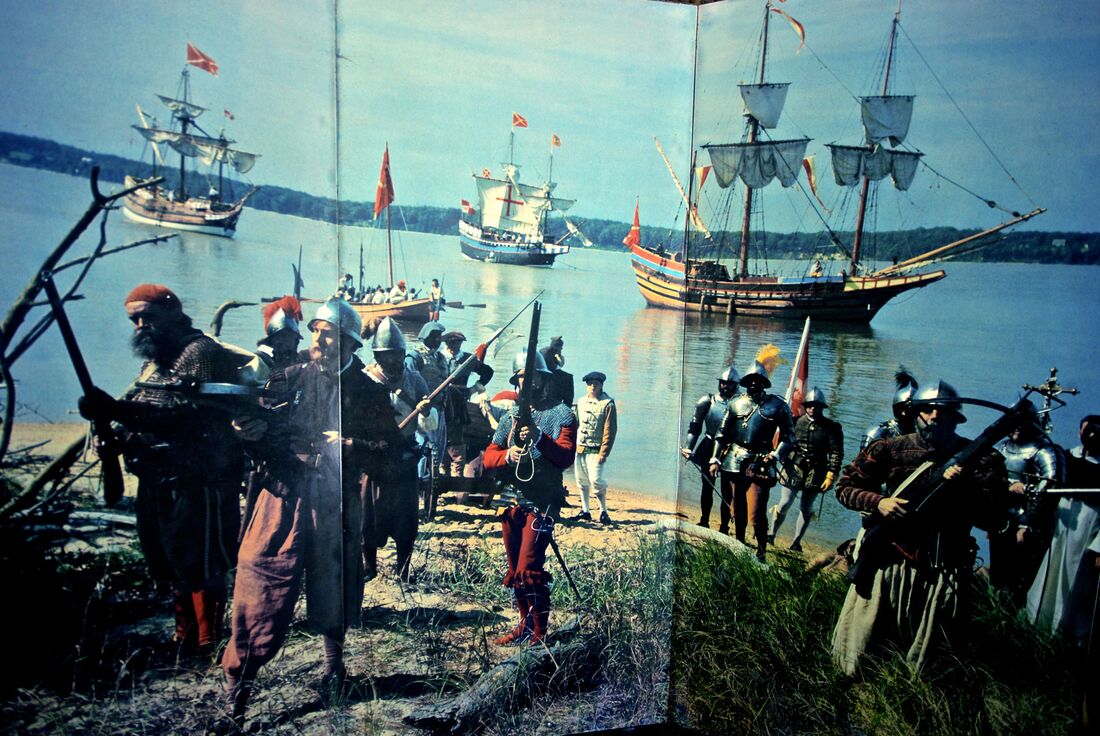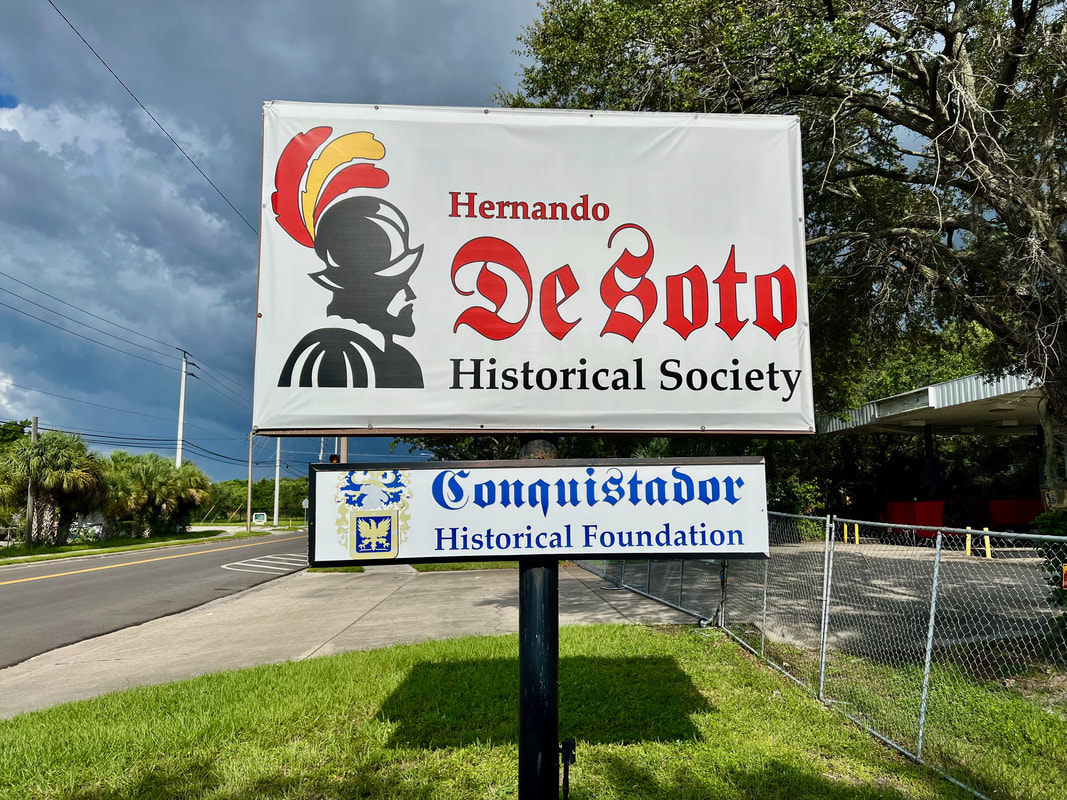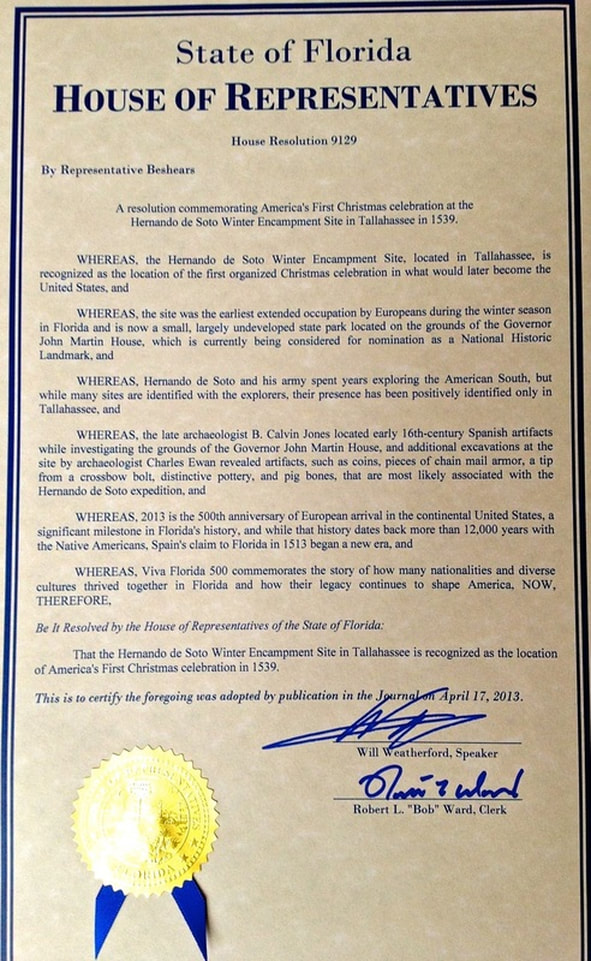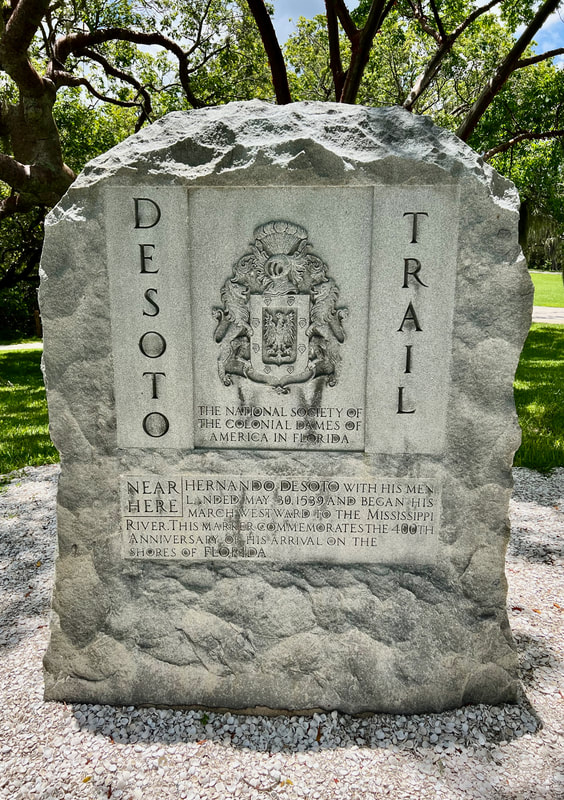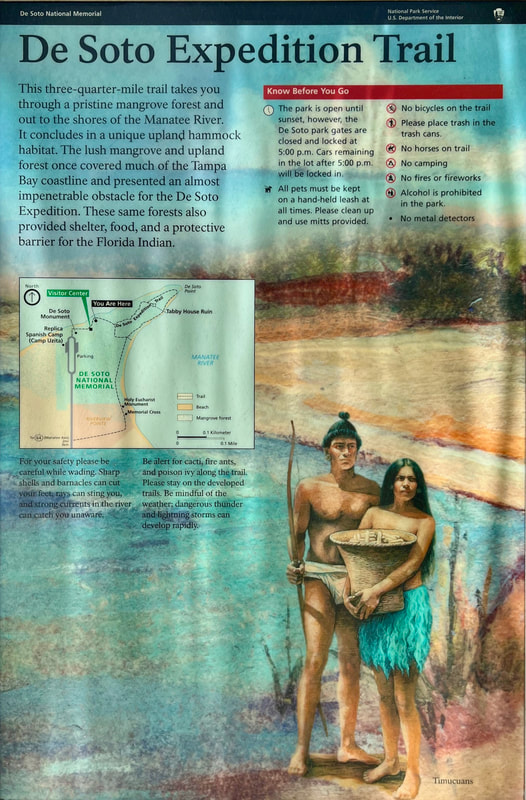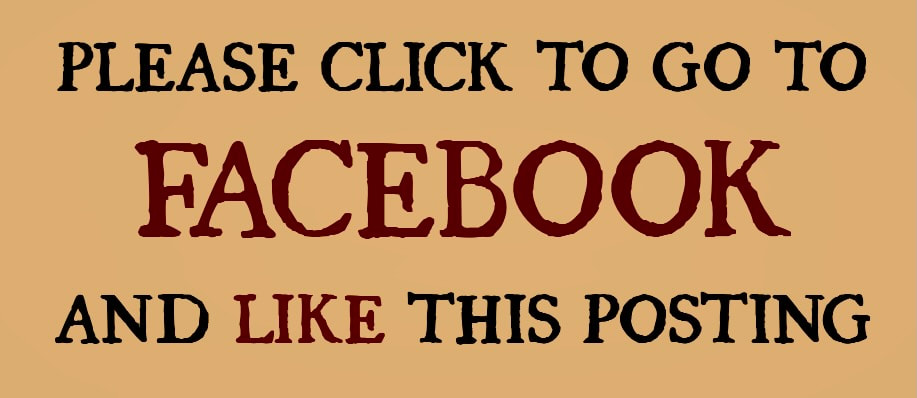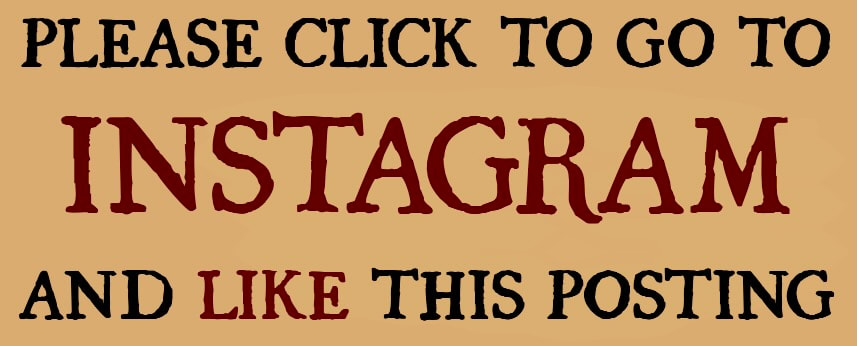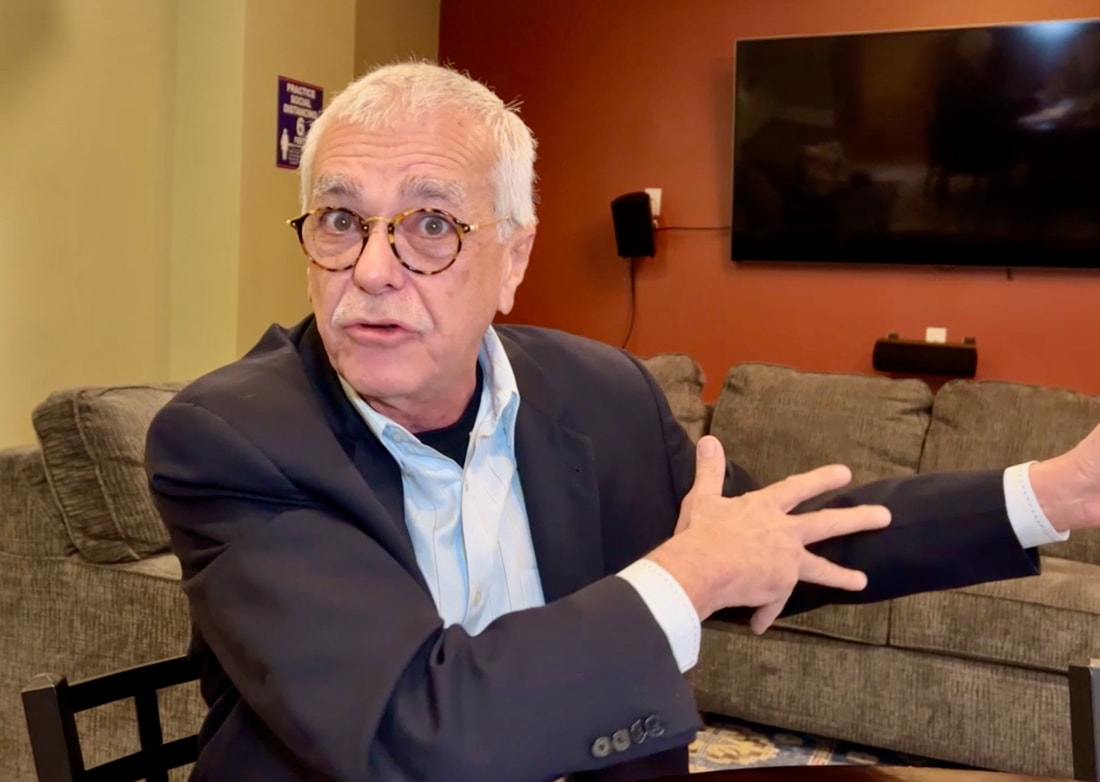25. America’s first Christmas
|
|
|
But in our annual struggle to preserve our own Hispanic holiday traditions, a little history is appropriate here. After all, it was our Spanish ancestors who celebrated the first Christmas in what is now the United States — 484 years ago!
Many historians still fail to recognize it and many books and websites simply skip that part of our history. But now there is significant evidence to show that Hernando de Soto, a dozen Catholic priests and some 600 Spanish explorers celebrated America's first Christmas in 1539, in Anhaica, a Native American village now known as Tallahassee, the capital of Florida. |
|
They sailed from Cuba a few months earlier, disembarked in the Tampa Bay area and endured a 300-mile trek to North Florida. But they were only in the beginning of what was to become the first — and most impressive — European overland exploration of North America.
From Florida, de Soto and his men went on to explore the territory that later became Georgia, South Carolina, North Carolina, Tennessee, Alabama, Mississippi, Arkansas and Louisiana. Their four-year, 4,000-mile hike finally lost its drive when de Soto died of fever at the banks of the Mississippi River, where he was buried in 1542. |
|
But not before celebrating that first American Christmas in Anhaica. It was one of the principal villages of the Apalachee natives, which the Spanish occupied, after driving the natives out, in the fall of 1539 and where they set up their winter encampment until March of 1540.
Florida historians and archaeologists believe it could not have been a merry Christmas, because the Spanish were constantly under attack by Apalachee natives who wanted their village back! (see image). They say that Christmas celebration may have been strained and brief, but few doubt that it happened. Although no hard evidence exists to prove that de Soto and his men celebrated that first Christmas in Tallahassee, historians say it's hard to imagine the priests who traveled with de Soto not saying mass on Christmas Day. |
To enlarge these images, click on them!
|
|
It's also hard to conceive that they had no special feast on the 12th day after Christmas, when Catholics commemorate the Epiphany: The manifestation of Christ to the gentiles on the day Jesus was visited by the three wise men (Matthew 2:1-12).
For many years, there was not evidence to prove that Tallahassee was the site of De Soto's winter encampment. Florida historians had assumed that the Anhaica the Spanish explorers described in their diaries was in the vicinity of Tallahassee's Lake Jackson, where they even erected a sign commemorating de Soto's encampment and the first American Christmas (see photo). But the exact location had not been identified. No physical evidence had been found and archeologists feared that de Soto's winter encampment had been lost beneath the concrete and steel of the capital city. However, in 1987, as bulldozers cleared the earth for a Tallahassee office complex, Florida state archaeologist B. Calvin Jones discovered artifacts from the de Soto expedition. Amazingly, only 36 years ago, he found Anhaica in downtown Tallahassee — only a short distance from the Florida state Capitol! |
|
Jones was joined by archaeologist Charles Evans and together they led a team excavation that recovered more than 40,000 artifacts, including teeth and jawbone fragments from pigs (first brought to North America by de Soto's expedition) and a Spanish coin minted about 1517 (see photo).
Although the four-acre site was slated for construction when the relics were found, the lot was purchased by the non-profit Trust for Public Land, designated as a "Florida Heritage Landmark" and turned into a small state park. And while most of the artifacts that were found there now are in museums, the park still features a marker and interpretive panel describing those findings (see photo). "The evidence includes links of chain mail armor, copper coins, the iron tip of a crossbow bolt, Spanish olive jar shards and glass trade beads," the sign states. "These finds provided the physical evidence of the 1539-40 winter encampment, the first confirmed de Soto site in North America. From this location, the de Soto expedition traveled northward and westward, making the first European contact with many native societies." They explored the North American wilderness some 265 years before the much more acclaimed Lewis and Clark. What more can I tell you? Nevertheless, in 2013, when Florida celebrated the 500th anniversary of its discovery by Juan Ponce de Leon, both the State Senate and the House of Representatives adopted resolutions declaring that "the Hernando de Soto Winter Encampment Site in Tallahassee is recognized as the location of America's first Christmas celebrations in 1539" (see photo). Mind you, that first Spanish American Christmas has doubters. But their problem is more with De Soto than with Christmas. They say the Spanish were simply too violent, because they tend to judge 16th century explorers by 21st century moral standards. No one denies that de Soto and his army raided villages and killed many Native Americans. But they also were subject to constant ambush attacks, suffered hundreds of casualties and endured amazing hardships in their quest to explore North America. Their critics tell us that the Spanish explorers didn't come to build, but only to seek gold and glory. Yet the settlements they established from Florida to California demonstrate the contrary. And surely they were not alone in seeking gold and killing Native Americans. Somehow, other European settlers don't get their adequate share of the blame for the Native American holocaust. |
|
But let's face it: De Soto and his men were going where no European had gone before — traveling through the wilderness, encountering hostile opposition along the way and fighting the same Apalachee who had nearly wiped out another Spanish expedition, led by Panfilo Narvaez, 11 years earlier. Of the 300 Spanish soldiers in the 1528 Narvaez expedition, only five had survived.
In those days, explorers had to do what the times dictated. Violence and cruelty was the norm in the New World, not just for Spanish explorers, but for everyone. |
|
Those who reject Spanish accomplishments based on the cruelty of the 16th century still are promoting the Black Legend — that centuries old campaign to demonize the Spanish conquistadors and minimize the accomplishments of Hispanics.
Nowadays, there are many websites pretending to tell the history of Christmas in the United States. Yet like all other historical research influenced by the bias of the Black Legend, many of these sites begin telling our Christmas story in 17th century British America and remain in complete denial of the Spanish presence in this country, which started in 1513. |
|
They tell you that Christmas wasn't always celebrated in this country; that it was actually banned in New England between 1659 and 1681 because the Puritan pilgrims considered it a heathen holiday. They tell you that Christmas Day again fell out of favor after the American Revolution because it was considered one of many "English customs" the American people wanted to repel.
As if all prior Christmases didn't really count, they tell you that the first Christmas — under the Declaration of Independence — was in 1776; that the first one under America's new constitution was in 1789; and that Christmas wasn't declared a federal holiday until 1870. Yet the real first American Christmas rarely gets mentioned! |
|
Some sites actually affirm that, "Christmas was not a holiday in early America." It's laughable!
Yet after that first 1539 Christmas in Tallahassee and before the anti-Christmas pilgrims arrived at Plymouth Rock in 1620, there are records to show that the birth of Christ was celebrated by Spanish explorers for decades in North America, starting in 1565 in St. Augustine, Florida, and in 1598 in New Mexico. What could lead to such distortion of history? Could it be because some people find it difficult to recognize that the first American Christmas celebrations were all in Spanish? The websites tell you all about the first Christmas tree, the first Christmas card, the first Nativity scene and the first Christmas store, but the first American city where Christmas was celebrated, well, that's a little harder to find. |
|
Unfortunately, the Black Legend is alive and well in the 21st century. America's hidden Hispanic heritage still is well-hidden.
And so, to fill the void in cyberspace and set the record straight, when people Google "America's first Christmas" from now on, maybe they'll be reading this column. Besides, this is my way of wishing you "Feliz Navidad," just the way it was expressed on that first American Christmas. Part of this column was originally published by Creators.com as America’s First Christmas - on December 27, 2011. |
Also see/Tambien vea:
17. A Hispanic Christmas
Una Navidad Hispana
22. Happy Three Kings Day!
Feliz Día de Reyes!
17. A Hispanic Christmas
Una Navidad Hispana
22. Happy Three Kings Day!
Feliz Día de Reyes!

